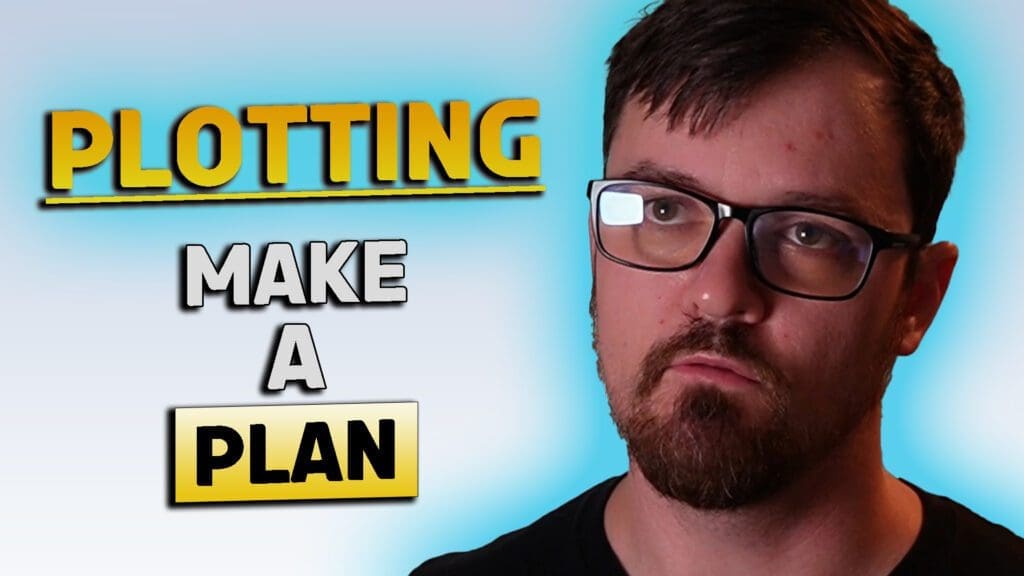This week, we’re discussing pantsing versus plotting. On Monday, we discussed the pros and cons of pantsing, which is my natural writing style. Today, I want to talk about plotting.
Plotting simply means writing out the plot before you start writing your book. People do this in a myriad of ways and there are countless plotting methods that people use to understand the story structure, identify character relationships, and so on.
There are too many to list here, but if you Google “how to plot my book,” dozens will pop up.
Instead of discussing how you should plot your book, I want to talk about the pros and cons of plotting. There are benefits and challenges to this method.
All plotters agree that your book needs some sort of outline. This can range from a few sentences about each scene or chapter to meticulously detailed notes spanning hundreds of pages. When an author sells a manuscript to a publishing house, if they’ve been in the industry for a while, they often only submit an outline. This outline undergoes a few edits, they receive feedback, and they refine their outline. Once everyone is satisfied, they sell the book and then write it. Sometimes, these outlines can be as long as 70 pages, which is a significant amount of work for a book that hasn’t been written yet (that’s the pantser in me talking).
However, many writers find it incredibly helpful to provide that level of detail to the world, story, and plot they’re about to write. They work well from that structure because it identifies all the things they need to pay attention to. Typically, an outline consists of a few things: your scene structure, which is how the story will flow at a macro level; your beats, which are individual movements inside the scenes, giving you your microstructure; and notes on the characters, relationships, important lore, and so on. From your macro view, your micro view, and your notes, you construct your novel filling in all the pieces in between.
If pantsing is a freewheeling exploration of a world and story, then plotting is exploring the world with a guidebook and itinerary. Neither is wrong; they’re just different preferences. Imagine you were traveling to another country. Would you plan your trip meticulously and get a guidebook so you knew exactly what you were looking at? Or would you just buy your ticket and show up? The answer to that question might tell you whether you’re a pantser or a plotter.
Let’s discuss the benefits of plotting. Plotted novels tend to have tighter stories. The reader’s experience tends to be more finely tuned, and often the feeling it produces aligns more closely with the author’s intent. There’s less room for interpretation, which, if a book is a vehicle for delivering the author’s intent, is a fantastic thing. Secondly, you tend not to lose the threads. It’s easier in a heavily plotted novel to introduce a subplot in one place and pick it up in another. It’s easier to ensure you’re dotting all your I’s and crossing all your T’s. You tend not to lose pieces of the story because you’re forgetting them. Additionally, it’s possible to create richer character motivation if you spend more time understanding what the characters are trying to do. Plotting gives you that opportunity. The more time you spend studying the subject, the better grasp you’ll have of it as you start to create. Furthermore, it can save you time. Often, when you’re plotting a novel, because you’ve done all the pre-work, it’s straightforward to write out the scenes because you’ve already thought about each one extensively.
But what’s the flip side? There are some cons to plotting as well. Sometimes, you get so focused on what you’re trying to do that the work becomes dry. It lacks the moments of wonder and surprise that make really good novels really good. It’s like the difference between seeing a butterfly collection and butterflies in a field. Yes, a butterfly collection is beautiful, but there’s no life there. So sometimes, it’s harder to inject that life into your work because it’s been so meticulously planned out.
At the end of the day, plotting and pantsing are just two different styles. Neither one is better or worse than the other. Plotters have a huge number of advantages, but one of the things they have to overcome is the rigidity of their structure.

YouTube Video Link: https://youtu.be/N_zGwHls5i8
Thanks for reading and watching.
Want in on all the secrets of writing compelling books? Have burning questions for Seth about the business side of being an author? Join the email list for up to date info on the latest videos!

Leave a Reply